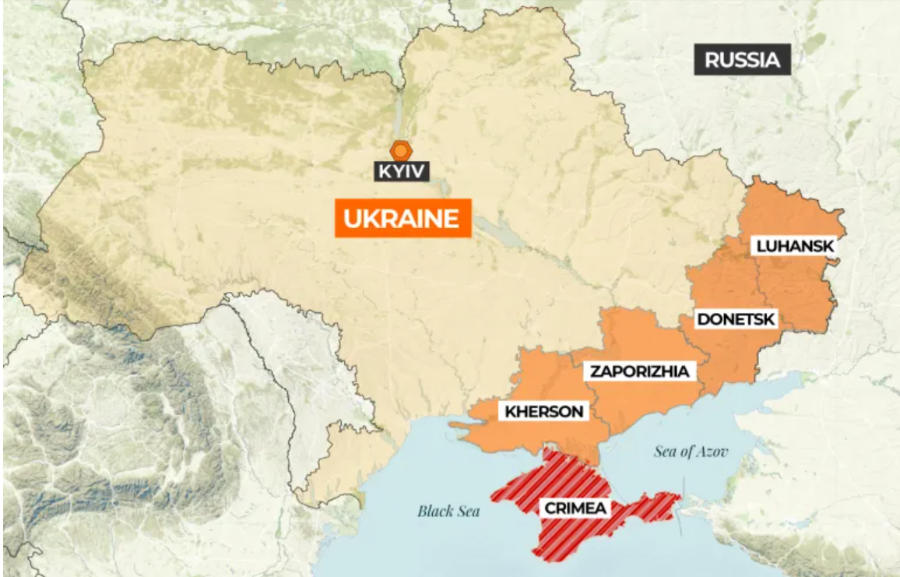The four regions annexed by Russia in September 2022 from Eastern Ukraine have seen a surge in taxable revenues, following their reorganisation and investments and incentives made into the territories by Moscow. Tax revenues in Donetsk, Lugansk, Kherson and Zaporozhye have continued to grow, with a total of 210 billion rubles (US$2.27 billion) raised in 2023, according to the Russian Federal Tax Service (FTS).
Konstantin Chekmyshev, Deputy Head of the FTS, told the Russian Accounts Chamber board in March that tax collection in Donetsk and Lugansk had jumped by 34% compared to 2022, while the actual tax burden decreased.
Previously under Kiev’s administration, the central government had neglected these regions due to their pro-Russian views and culture and had ceased effective funding from 2014, leaving them in effective limbo and to be supported by Russian grants. Eventually, the status quo changed as these regions voted in what were described as ‘illegal’ referendums to rejoin Russia in 2022. All voted overwhelmingly to do so. The results have been unrecognised by both Kiev and the West.
The regional infrastructure, including power, water, sewage and other essential services such as medical, post, internet, IT and TV have now all been absorbed into the Russian national systems, while the FTS has focused on simplifying the legal procedures for businesses entering the new regions. Moscow provides tax incentives and grants for Russian businesses and foreign investors to invest in these regions.
For example, Russian President Vladimir Putin signed a law in 2023 to create free trade economic zones for each of the new regions, with preferential tax treatment for investors, and other tax and non-tax incentives. These include discounts on utilities, employment benefits, and five year delays for profits tax contributions. These are similar to the incentives provided in the free trade economic zones in Crimea and Sevastopol.
This has spurred investment into these regions for businesses that are not location-specific or have business experience in the region, including with Ukraine. According to Chekmyshev, the number of SMEs setting up in these zones continues to grow, and especially in Zaporozhye and Kherson.
The Zaporozhye Region is located in the south of European Russia and has access to the Sea of Azov, with industries now recovering in agriculture, energy and mining. Kherson is also in South Russia and has access to both the Azov and Black Seas. It has a developing agricultural industry. Donetsk is on the Azov Sea and has over 15,000 rivers. It is mineral rich, especially in coal (the Donets Coalfield) and has considerable reserves of rock salt. It also has deposits of dolomites, limestone, clay and mercury, as well as iron and aluminium ore. Lugansk is sited on the Seversky Donets River, and has a metals industry, coal, anthracite and peat coal mining, machine-building and chemical industries. It also has a developed agricultural sector focusing on crop farming. The collective population of these four regions is about 8.6 million.

Russian domestic investment data indicates that as of March 2024, 155,000 new businesses have registered in the four new Russian regions, of which 99,000 are SMEs.
The dynamics of tax revenues at the beginning of 2024 also remain positive, according to the FTS, having doubled in January and February in annual terms. The pragmatic reality is that these regions have not been under effective control from Kiev since 2014, existing in a type of twilight zone being neither supported by Ukraine, yet not part of Russia either. That significantly damaged their local economies and social infrastructure, with the regions also subjected to military conflict. Over time, that position became untenable, with Russia eventually stepping in to secure the populations well-being and restore order and infrastructure. One of the classic steps to take when recovering broken regions once they have been secured is the re-structuring of the local economy and providing stimulus to do so. In this case, the resumption of taxable commerce is indicative of a sustainable social and commercial environment, and subsequently allows the local economies to develop on their own merits.




